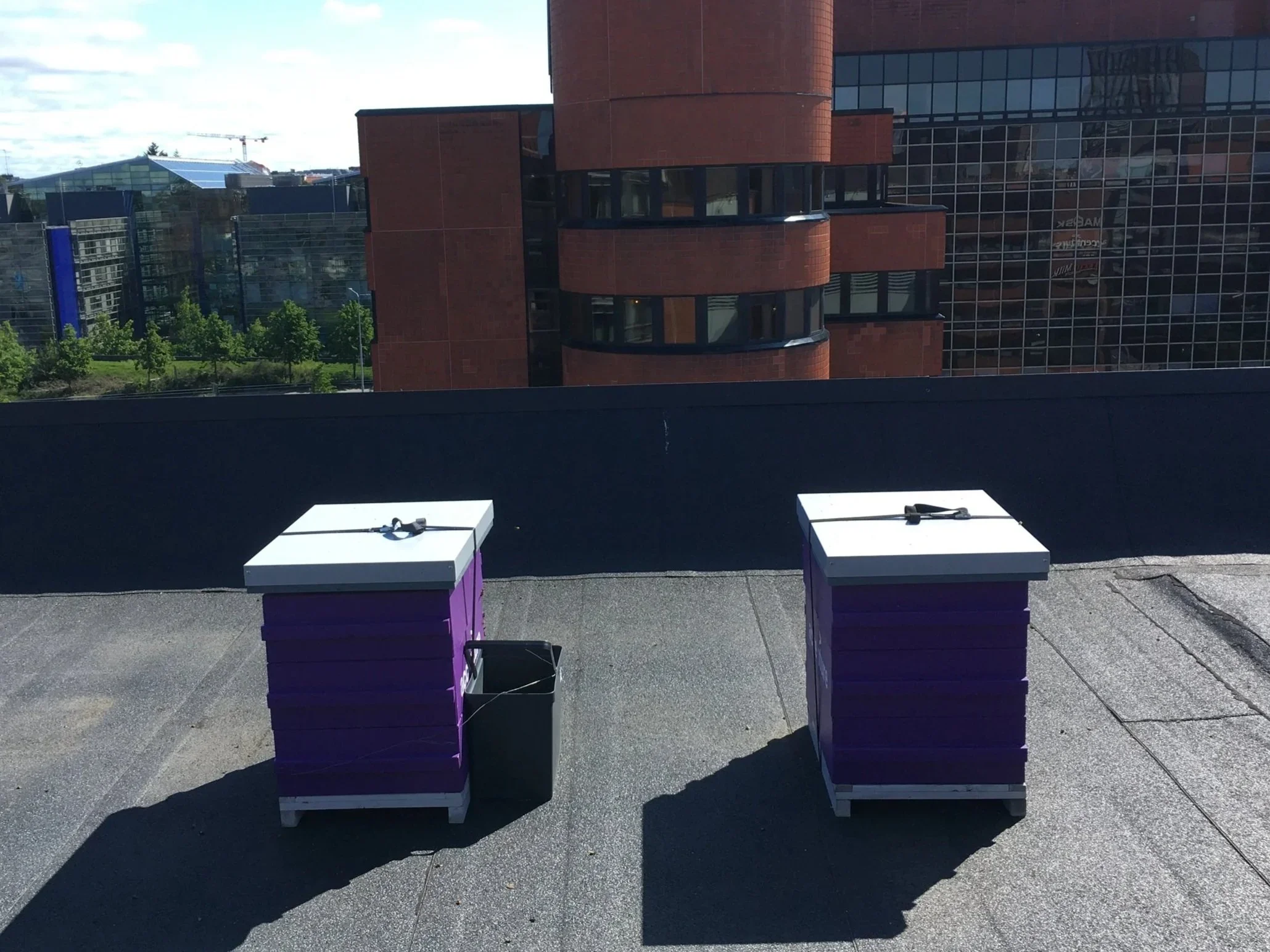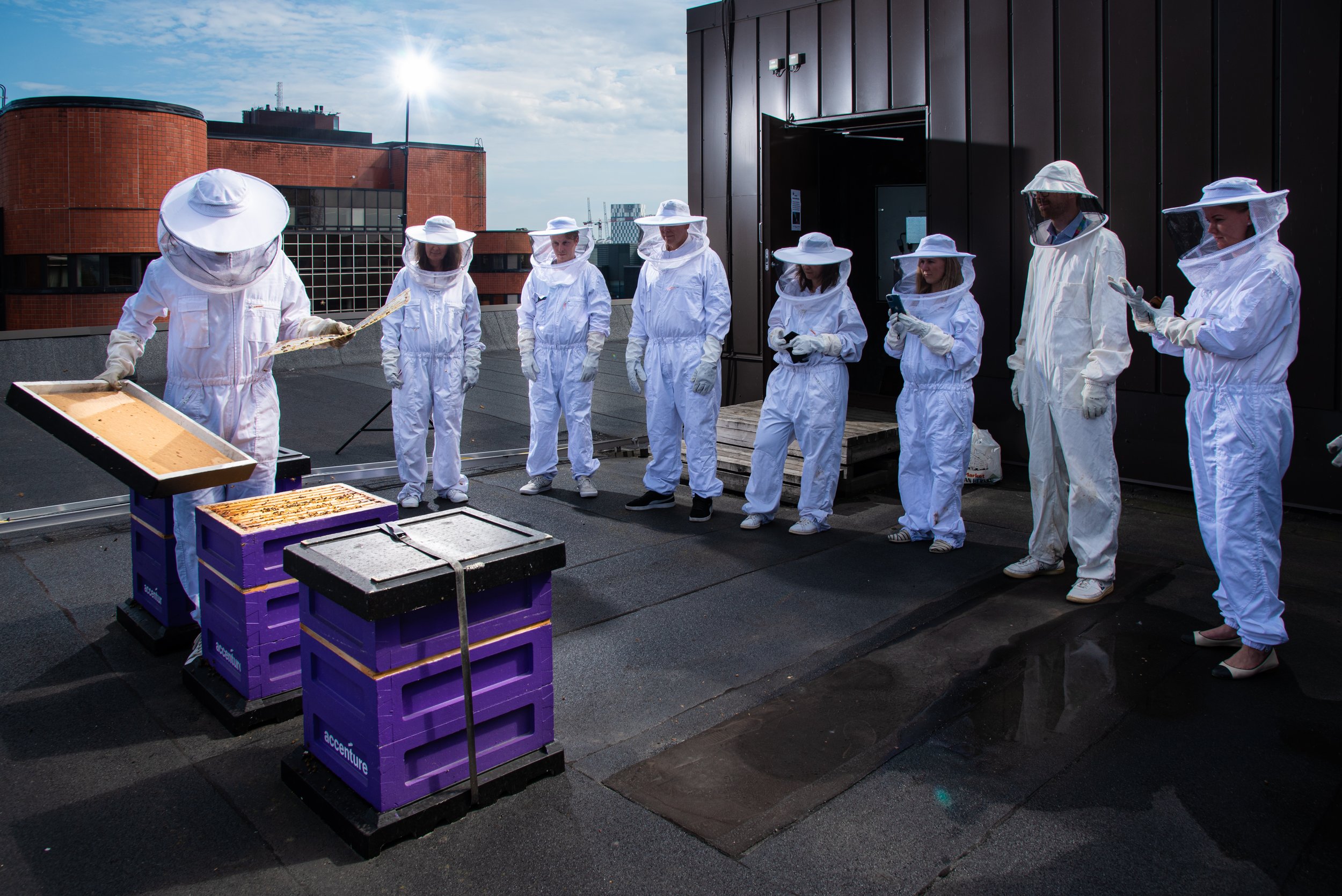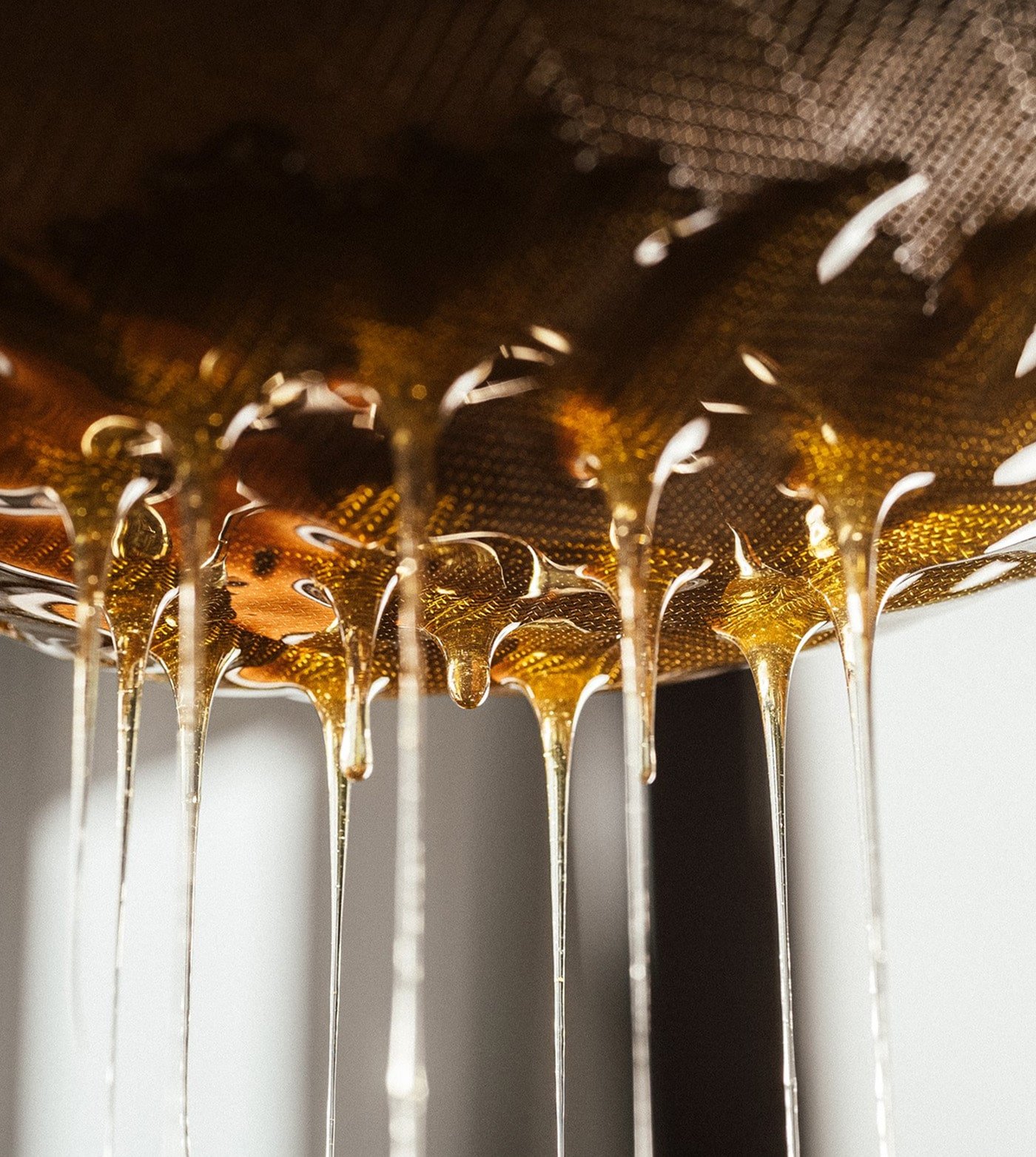MyHive updates
Lorem ipsum dolor sit amet

Accenture: 8.10
Bees survive the long winter by forming a "winter ball" around the queen.
They do not hibernate, but produce heat energy by vibrating their wing muscles in a tight ball formation. They get the energy for this long process from the sugar that fills the hive. The picture shows how the bees have sealed the hive's roof.
Did you know that even in the harshest winter frosts, the temperature inside a beehive can exceed +25 degrees Celsius?

Accenture: 14.8.2025
During our latest visit to the hives, it was time to gather the honeycombs: the result of weeks of steady foraging across the surrounding areas. Much of the nectar came from the Linden trees, which have been in full bloom along Helsinki’s streets and parks during July.
The frames are now full, capped with wax, and ready for extraction. Soon, the honey will be spun out and jarred as a small, golden trace of the season, shaped by the bees and the landscape around Ruoholahti.

Accenture: 12.8.2025
The hives at Accenture have been busy all summer, collecting nectar from city trees and flowers. They have been building up a sweet reserve of golden honey and now it’s time to start preparing for the sweet summer turning into autumn.
During the latest visit, the two colonies were combined to form one strong hive for the winter. While both hives had collected a good amount of honey, one had a smaller population, and by merging the two, we’re giving the bees a better chance to overwinter safely, sharing warmth and resources in one cozy colony. 🐝

Accenture: 31.7.2025
This visit was the last sampling round of the summer. The honey samples we collect from the beehives contain eDNA from the plants visited by the bees on their foraging trips to the nearby nature. The samples tell us which plants the bees have visited and provide information about the biodiversity of the Ruoholahti area and the range of food sources available to the bees.
In the picture you can see wax honeycomb built by the bees. The bottom part of the comb is fresh nectar that still needs to be dried into thicker honey which the bees will seal into the combs with a wax cap as seen on the top part. By collecting the samples from the border between fresh and capped honey, we can be sure that the eDNA is from newly collected honey and represents the plants our bees have visited during the last couple of weeks.

Accenture: 22.7.2025
Summer finally started in July and the hives have been thriving in the warm weather, with forager bees making the most of sunny days to collect nectar from city trees and gardens. This time of the summer their beelines often lead to the linden trees that are in full bloom by mid July.
Lindens that line our city streets are prolific nectar producers and they give the urban honey it’s signature minty aftertaste 🌳🍯

Accenture: 24.6.2025
The bees have been hard at work preparing for the main nectar flow that usually starts after midsummer. The colony is active, and the frames are filling up with pollen, which is an essential food source for the developing brood.
During this visit, we also collected our first honey sample of the season. This early summer honey will be analyzed to reveal which plants the bees have been visiting in the area. It's a small but powerful way to understand local biodiversity through the bees’ eyes.
We'll be back soon with more updates from the rooftop!

Accenture: 17.6.2025
This week, we carried out a hive split: a natural beekeeping method used to prevent swarming and freeing up space to storage all the upcoming honey. In practice, this means that the queen is moved with a small entourage of worker bees into a new hive where she keeps laying eggs while the original hive will focus on honey collection during the peak season.
This approach reduces the risk of swarming and ensures that both hives can focus on what they do best: raising brood and collecting nectar through the summer bloom 🌼🍯

Accenture: 6.6.2025
The sun is out, and the hive is buzzing with activity! Our bees are making the most of the early season blooms, busily collecting nectar and pollen from the white flowers of the chestnut trees that are an abundant food source in the cities.
Stay tuned for more updates from the hive!

Accenture: 16.8.23
Today we welcomed a curious and engaged group of 8 participants for a hive visit under the sun!
It’s always a joy to share the bees’ world up close and share with you what’s happening inside the hive.
It was fun to answer your questions and we are sure the hive felt the buzz too! 🐝💛

